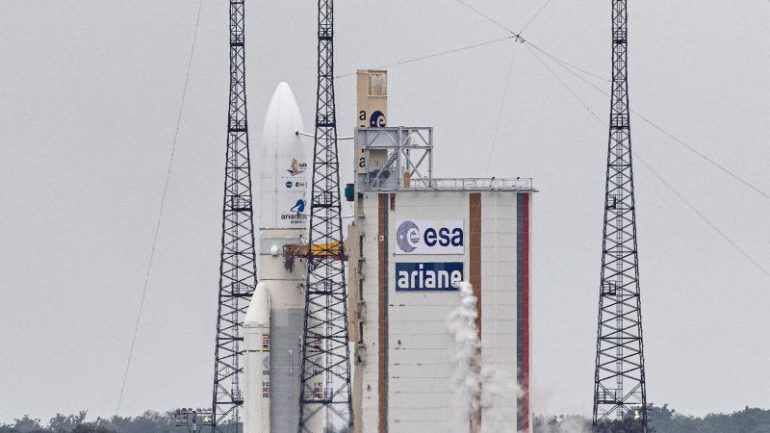RTL,news,News ticker,
December 25, 2021 – 16:33 Watch
Kourou (DPA) — After 30 years of development, ten billion dollars in costs and repeatedly postponed launches, it will be another 27 tense minutes on Saturday, before loudly in front of monitors at the European Spaceport in Kourou The cheers will start. French Guiana.
Tension among spectators at the Observation Center has eased seconds before the most expensive telescope in human history is disconnected from its launcher. The “James Webb Space Telescope” (JWST) is now alone on its historic mission – and has successfully launched one of mankind’s most sought-after space projects.
It will take about four weeks for the telescope to reach its target orbit about 1.5 million kilometers away (about four times the distance between Earth and the Moon). There it should look deeper into the universe than any other telescope with the help of a 25 square meter mirror. For more than ten years, the telescope will explore the oldest galaxies in space — “James Webb begins his journey to the birth of our universe,” said commentator on NASA’s live broadcast.
Among other things, the global research community hopes that the “web” will provide information about the early period after the Big Bang, about 13.8 billion years ago. Earth’s direct atmosphere in our solar system should also be investigated. The web recording should show, for example, whether there are habitable planets with water resources.
German technology on board
There are also some German components on board. For example, a near-infrared instrument called NIRSPC was built by Airbus in Ottobrunn and Friedrichshafen, and led by the Jena Fraunhofer Institute for Applied Optics and Precision Mechanics (IOF), created high-precision mirrors that are now part of a Huh. Measuring instrument. It is so sensitive that it can see a candle on Jupiter’s moon at a distance of about a billion kilometers from Earth, the IOF said. In addition, the Max Planck Institute for Astronomy in Heidelberg was responsible for a filter wheel and two grid wheels for the telescope’s camera and spectrograph.
“We prepared a Christmas present for humanity all over the world,” says Josef Aschbacher, Austrian general director of the European Space Agency Esa, shortly after launch – and then admits we were particularly excited. “I can’t do it every day, it won’t be good for my life expectancy.”
The collaboration with many other partners from space agencies such as NASA from the USA, CSA from Canada and Europe is unique – and it was not always under a good star. The trade magazine “Nature” once wrote “the most expensive astronomical risk in history”. The idea for such a telescope first arose in the late 1980s, and planning and construction have been ongoing ever since. Development was repeatedly delayed, which originally exploded at about $500 million. The telescope was originally scheduled to launch in 2007 – but the start was repeatedly postponed.
Controversy then arose over the name, which goes back to the second director in NASA history. Webb was the head of NASA in the 1960s – at a time when the agency sent the first humans into space, but also at a time when an employee was fired on suspicion that he might be gay. Several scientists had asked for the name change, but current NASA boss Bill Nelson declined.
Can the operation be successful?
The James Webb Telescope is several times more powerful than the Hubble Telescope, which was launched in 1990. While “Hubble” operates in the optical and ultraviolet ranges, “James Webb” probes in the near-infrared. Astrophysicist John Mather once said that the telescope could “track a beehive from Earth to the Moon”.
The first data and images from the telescope aren’t expected until summer at the earliest — if all goes well. Initially, NASA defined 344 critical points during the mission that threatened the planned use of the telescope. The fact that the telescope flies so far is also a risk: while “Hubble” was repaired and serviced several times with shuttle flights at an altitude of 500 km, this is no longer possible with JWST at 1.5 million km. Is.
“A great reward always comes with a great risk,” Bill Nelson said in a brief statement after the start on Saturday. He ends with the words he deemed appropriate for the significance of the moment: “God save the scientists and God save the planet Earth.”
© dpa-infocom, dpa: 211225-99-502840/6
Source: DPA

Devoted web advocate. Bacon scholar. Internet lover. Passionate twitteraholic. Unable to type with boxing gloves on. Lifelong beer fanatic.





